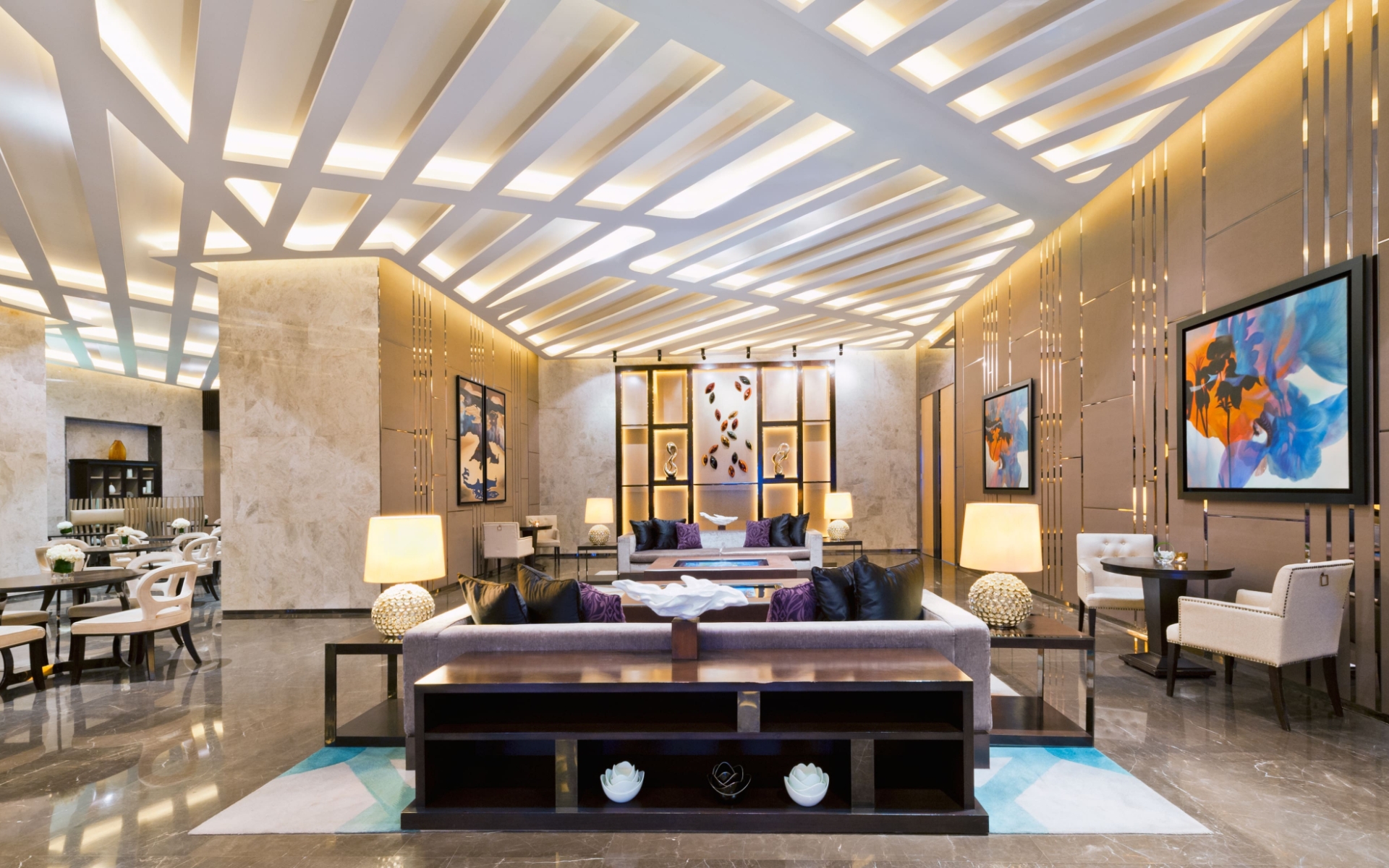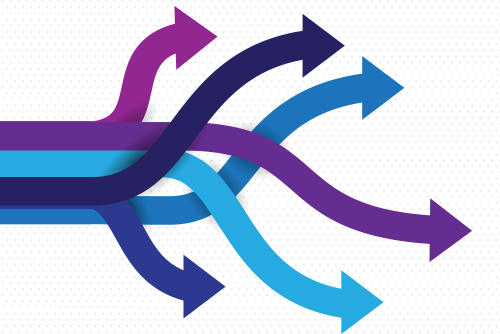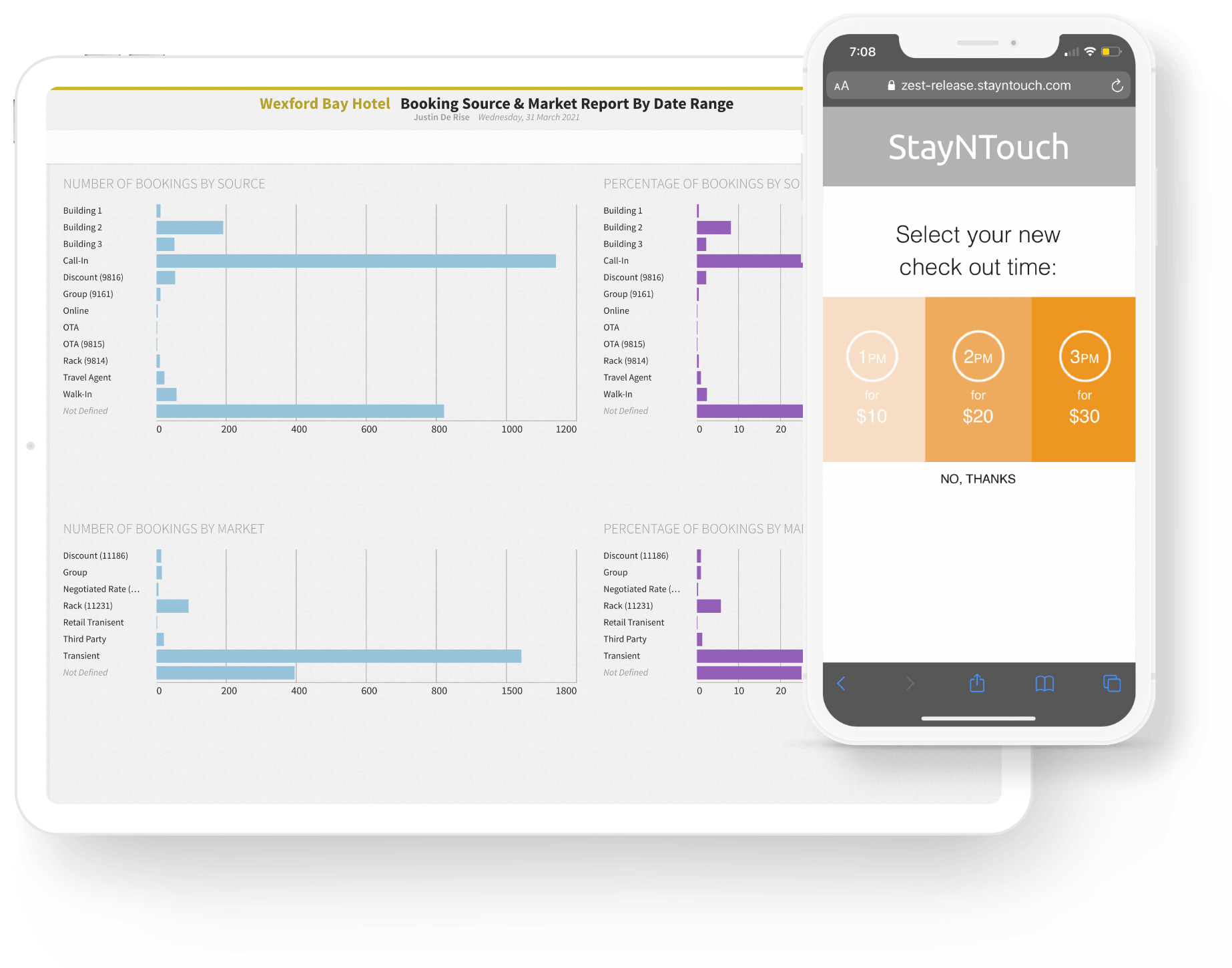
4 Things Your Hotel PMS Should Be Doing-But Is It?
A hotel property management system (PMS) is the central point of hotel operations. It has become an indispensable tool in an ever demanding and challenging
With access to real-time KPIs, hotels and resorts of all sizes can now engage in evidence-based decision making that captures more revenue, reduces costs, and maximizes profit.
—Justin DeRise
If you avoided a speeding ticket on your way to work this morning and managed not to run out of gas, thank your KPIs. In the same way that a speedometer and gas gauge helped you reach your destination on time, key performance indicators can help hotels and resorts measure their progress and stay on track with their revenue and profit goals. Hotels that have real-time data at their fingertips can make informed, data- driven
decisions that affect their bottom line, from identifying peak seasons and optimal staffing levels to executing marketing and sales campaigns that fill their rooms.Hotels that don’t have quick access to critical KPIs will be less likely to operate at optimal efficiency and maximum profit. Without it, they will find it harder to see around the corner and will be less equipped to exploit opportunities and manage threats.
It should not feel like managers are drowning in data or wasting time sifting through reams of reports. Streamline your data by identifying the four or five key metrics that will define success for your hotel, and ensure that you receive updates on those KPIs on a daily, weekly, and monthly basis. Each KPI should have a specific quota and goal associated with it, otherwise, there is no way to measure how well you are performing. The quota is defined as the lowest number acceptable and the goal is the number your hotel is aiming for. Set an alarm so you receive an alert if your KPIs go under or over a certain level.
The good news is that tracking your KPIs in real-time isn’t as much work as you might think—if you have the right system in place. Cloud-based hotel property management systems like StayNTouch are leveling the playing field and enabling hotels of all sizes to simplify and automate their KPIs and other business intelligence capabilities.
While there are many ways to measure your hotel’s performance, there are four KPIs that we believe are essential for hotels to track:
(1)
The Average Daily Rate, or ADR, is perhaps the best-known way of gauging performance in the hotel industry. This metric is straightforward – it’s the average price that your guests paid per room on any given day. This data point can be revealing by itself as an indication of how the hotel is doing on a daily basis, or it can be used to discern patterns and trends over a specific period of time.
Calculating ADR is easy. Simply divide Total Room Revenue by Total Rooms Occupied (excluding complimentary rooms). Once you have sound baseline data, you can compare your hotel’s performance with your competitors and make strategic decisions that increase your ADR and drive your hotel’s bottom line. Analyze it to see how it compares to the same day in the previous year and versus your three-month average.
Knowing your ADR allows you to make midcourse adjustments as needed. Determine the minimum ADR you need in order to be profitable and monitor it so you know if and when it drops below that point. If you have a high occupancy rate combined with a lower ADR, a correction may be needed. Consider the common strategy to discount room rates to increase a hotel’s occupancy rate—at a certain point, this can become a revenue loser. ADR analysis tells you when to hit the brakes.
Knowing your ADR also helps you evaluate and hone your business and sales strategy. Your marketing team might undertake a campaign to increase your baseline ADR by attracting higher-end guests and ensuring that more of your premium-priced rooms are occupied. You will want to test how your ADR is affected by different pricing strategies, cross-selling and up-selling opportunities, and the use of online travel agencies like Expedia.

(2)
How does your hotel perform over different time periods and seasons? Why are there times when it is packed to the brim and other times when it may feel more like a ghost town?
Do you need to adjust your Average Daily Rate to increase demand? It’s nearly impossible to answer these and other important questions without knowing your hotel’s occupancy rate. In fact, many hotel executives will tell you that it’s the most critical data point, not to mention the easiest to calculate. Your hotel’s occupancy rate – the percentage of available rooms occupied over a specific period of time – is calculated by dividing the number of rooms occupied by the number of rooms available. Your occupancy percentage reflects how filled your hotel is.
Determine the minimum level of occupancy that ensures profitability and, if you dip below that number, diagnose the issue and take action in real time. Keep in mind that, while a high occupancy rate is of course preferable to a lower rate, it is not the ultimate goal; maximizing revenue and profit is. Enhance your hotel’s occupancy rate by instituting loyalty and rewards programs, offering seasonal hotel packages, and offering last-minute specials that appeal to the more spontaneous millennials.
(3)
Revenue Per Available Room, or RevPAR for short, is considered by many hotel executives to be the go-to metric for quickly evaluating the financial performance of their hotel, in particular,

how effective they have been in filling rooms and maximizing profit. RevPAR reflects how well the Average Daily Rate is doing in terms of attracting guests to the hotel and meeting target occupancy goals, and how this compares with its competitors. RevPAR reflects the average revenue you’re getting out of each room, not just those that are occupied. In an ideal scenario, this number would be equivalent to your occupancy rate, signifying that every available room is filled.
There are a couple of ways to calculate it: Take your occupancy rate and multiply it by your ADR, or divide total room revenue by
the total number of available hotel rooms in the period of time that you are measuring. A high RevPAR score is correlated with a high occupancy rate and ADR and is used by hotels to plan both high and low seasons. One thing to remember is that your RevPAR score reflects revenue, not profit. This means you must use it along with other metrics – such as cost and expense reports – to get a comprehensive picture of your hotel’s true performance. Try improving your hotel or resort’s RevPAR score by increasing Average Length of Stay (ALOS) and increasing cancellation fees in order to reduce last-minute cancellations.

(4)
Your customer satisfaction rate speaks to how well customers are being served at all touchpoints. The Customer Satisfaction Rating depends on your hotel’s ability to encourage your guests to complete brief surveys or fill out feedback forms. The feedback that hotels receive, while not always positive, is always valuable because it reveals gaps in customer service that management needs to address through corrective action as well as strengths to build on.
That said, motivating guests to take the time to review their stay can be a challenge; directing front desk staff to ask departing guests to fill out a survey card is as uncomfortable for them as it is for the guest. Fortunately, this process can be automated with cloud-based technology like StayNTouch’s hotel property management system, which can automatically send out surveys a few hours after guests complete their stay at your hotel.
A common issue for hotel managers is how to integrate KPIs into their time-strapped workday. Where do you find the time to review all that data? When it comes to KPIs, it’s important to remember that less is more. Streamline your data so you track only your most critical KPIs, such as the four featured in this blog post.
With the technology that is available today, monitoring and analyzing your KPIs has never been easier.All it really takes is setting aside ten minutes every day for you to assess and analyze the data for potential opportunities and risks. With access to real-time KPIs, hotels and resorts of all sizes can now engage in evidence-based decision making that captures more revenue, reduces costs, and maximizes profit.
Resources:

A hotel property management system (PMS) is the central point of hotel operations. It has become an indispensable tool in an ever demanding and challenging

It’s no secret – we love our phones, and we spend a lot of time on them. According to Flurry, one of the leaders in

When hotel managements decides to build a hotel these days, they don’t simply just build something generic. They very carefully examine the demand-drivers, occupancy and


See how StayNtouch’s Cloud PMS, Guest Mobility, and Guest Kiosk solutions deliver better results for hotels through better front & back of house communication, increased mobile touch-points, more revenue and operational efficiency, and unlimited interfaces.
Your demo will include how to:

Manage and Set Tasks Across Your Departments

Ensure Guest Satisfaction & Safety With Contactless Check-in Options

Automate Easy Upsells & Monetized Early/Late Checkouts

Set & Manage Rates/Availability

Integrate With Tools and Platforms Essential
to Your Hotel
And More!